A 1904 Silver Dollar’s value ranges from $53-$63 for circulated coins, but can reach thousands for high-grade specimens. The coin’s worth depends primarily on its condition grade (assessed by PCGS or NGC), mint mark (O, S, or none), and special designations like “Proof-Like” or “Gem Uncirculated.” Uncirculated Mint State coins command premium prices compared to circulated examples. Coins certified by reputable grading services like NGC and PCGS are more valuable and trustworthy. Market demand and authenticity also influence pricing. To determine accurate value, consult NGC or PCGS grading websites, reputable numismatic dealers, or check recent auction sales on platforms like eBay for comparable coins.
The 1904 Morgan silver dollar represents one of the final chapters in the beloved Morgan dollar series, minted just seventeen years before production ceased in 1921. While collectors once considered these coins common, today’s market reveals a different story—especially for specimens with specific mint marks and error varieties. Understanding what separates a $35 circulated piece from a thousand-dollar gem can transform an inherited collection into a significant asset.
Understanding the Three 1904 Morgan Dollar Varieties
The Philadelphia, New Orleans, and San Francisco mints produced Morgan dollars in 1904, each creating distinct collecting opportunities. Philadelphia struck coins without a mint mark, while New Orleans and San Francisco pieces display “O” and “S” respectively on the reverse, just below the wreath.
Philadelphia produced 2,788,650 pieces—a relatively modest mintage that increases collectibility. New Orleans churned out 3,720,000 coins, the highest 1904 production figure. San Francisco contributed 2,304,000 pieces, creating the scarcest variety by mintage alone. These production numbers directly influence base values, though condition ultimately determines what collectors will pay.
Identifying your coin requires examining the reverse beneath the eagle and wreath. No mint mark indicates Philadelphia production. A small “O” signals New Orleans origin, while an “S” confirms San Francisco minting. This single letter can mean hundreds of dollars in value difference for identical grades.
1904 Morgan Dollar Value by Mint Mark and Grade
Philadelphia (No Mint Mark) Values
Circulated 1904 Philadelphia dollars in Good-4 condition trade for $32 to $38, reflecting primarily silver content. Fine-12 specimens bring $40 to $48, while About Uncirculated-50 examples command $65 to $85. The real value acceleration begins in Mint State.
MS-60 coins fetch $110 to $145, representing the entry point for uncirculated examples. MS-63 specimens, showing moderate luster with few contact marks, sell for $185 to $240. MS-65 gems with strong eye appeal and minimal imperfections reach $850 to $1,200. Exceptional MS-67 pieces have sold through Heritage Auctions for $4,500 to $6,800.
New Orleans “O” Mint Mark Values
The 1904-O represents excellent value for collectors seeking affordable Morgan dollars. Circulated grades from Good-4 through Fine-12 range from $35 to $50. About Uncirculated-50 examples trade for $53 to $63, according to NGC price guides.
Uncirculated specimens show dramatic price increases. MS-60 coins sell for $75 to $95. MS-63 examples certified by NGC or PCGS command $140 to $180. MS-65 specimens with gem surfaces reach $675 to $950. Proof-like designations add 30-50% premiums, with MS-65 PL coins selling for $1,100 to $1,600.
The highest certified 1904-O, graded MS-68 by PCGS, sold for $28,200 in a 2023 Heritage Auction, demonstrating the extraordinary premiums attached to condition rarities.
San Francisco “S” Mint Mark Values
The 1904-S carries intermediate values between Philadelphia and New Orleans issues. Good-4 through Fine-12 circulated coins trade for $38 to $52. About Uncirculated-50 specimens bring $70 to $95.
MS-60 examples sell for $125 to $175. MS-63 coins fetch $245 to $325. MS-65 gems command $1,100 to $1,650, reflecting the difficulty of finding San Francisco issues with strong strikes and minimal bag marks. MS-67 specimens rarely appear at auction, with recent examples selling for $8,500 to $12,000.
| Grade | Philadelphia | New Orleans (O) | San Francisco (S) |
|---|---|---|---|
| G-4 | $32-$38 | $35-$42 | $38-$45 |
| F-12 | $40-$48 | $42-$50 | $45-$52 |
| AU-50 | $65-$85 | $53-$63 | $70-$95 |
| MS-60 | $110-$145 | $75-$95 | $125-$175 |
| MS-63 | $185-$240 | $140-$180 | $245-$325 |
| MS-65 | $850-$1,200 | $675-$950 | $1,100-$1,650 |
Known Error Varieties and Their Premium Values
Doubled Die Obverse Varieties
Several 1904 Philadelphia dollars exhibit doubling on date digits and LIBERTY letters. The most significant variety shows doubling on the “9” and “0” in the date, visible under 5x magnification. Circulated examples with this error add $75 to $125 above standard values, while Mint State specimens command $300 to $650 premiums depending on doubling strength and overall grade.
Repunched Mint Marks on 1904-O
New Orleans production included several repunched “O” varieties where the mint mark was stamped multiple times. The most collectible shows a secondary “O” impression to the lower left of the primary mark. These varieties add $45 to $85 for circulated coins and $175 to $350 for uncirculated examples in MS-63 or better.
Die Cracks and Breaks
Later die state 1904 Philadelphia dollars sometimes display prominent die cracks from rim through stars or date. While not considered true errors by purists, significant breaks can add $25 to $60 for dramatic examples. A retained broken die piece creating a raised bump on the planchet commands higher premiums of $100 to $200.
Off-Center Strikes
Genuine off-center 1904 Morgan dollars are exceptionally rare, as quality control typically caught these errors. A 5% off-center strike showing partial date brings $800 to $1,500. A 10-15% off-center example with full date visible sold for $4,200 through Great Collections in 2022. Specimens missing significant design elements due to extreme misalignment have exceeded $7,000 at auction.
Wrong Planchet Errors
No confirmed wrong planchet 1904 Morgan dollars exist in major registry collections, though persistent rumors circulate about a piece struck on a quarter planchet. Such an error, if authenticated, would represent a five or six-figure rarity.
Factors That Determine Your Coin’s Final Value
Strike Quality Variations
Not all Mint State 1904 dollars present equally. San Francisco coins often suffer from weak strikes on the eagle’s breast feathers and hair details above Liberty’s ear. Philadelphia pieces generally show sharper strikes with complete feather detail. New Orleans strikes vary considerably—some exhibit full definition while others show mushy details despite minimal wear.
A weakly struck MS-64 might sell for the same price as a sharply struck MS-63. Professional grading services note strike quality in their holder descriptions, with terms like “Full Strike” adding 15-25% premiums. Collectors building high-quality sets prioritize these sharply defined specimens.
Toning and Surface Appeal
Original toning can significantly enhance values for Mint State examples. Attractive blue, gold, and purple album toning on MS-64 or better coins adds 25-60% premiums. Monster-toned specimens with vivid rainbow colors command 100-200% premiums at auction.
Conversely, unattractive brown or blotchy toning reduces values by 10-30% even at the same numeric grade. Artificially toned coins—those subjected to chemicals or heat—trade at discounts of 40-60% compared to naturally toned examples. Experienced collectors examine toning patterns carefully, looking for rim progression that indicates natural aging versus artificial enhancement.
Proof-Like and Deep Mirror Proof-Like Designations
Some 1904 Morgan dollars exhibit reflective fields reminiscent of proof coins, earning Proof-Like (PL) or Deep Mirror Proof-Like (DMPL) designations from grading services. These special strikes occurred when fresh dies imparted mirror surfaces to early strikes.
A 1904-O MS-64 PL sells for $850 to $1,200 compared to $300 to $400 for standard MS-64 examples—nearly triple the value. DMPL specimens with deeply reflective fields command even higher premiums. A 1904-O MS-65 DMPL realized $3,600 at a 2023 Stack’s Bowers auction.
Philadelphia proof-like pieces appear less frequently than New Orleans examples. A 1904 Philadelphia MS-65 PL brings $2,200 to $2,800, while standard MS-65 examples sell for $850 to $1,200.
Authentication and Third-Party Grading Value Impacts
Raw, ungraded 1904 Morgan dollars sell for 20-40% less than identical coins certified by PCGS or NGC. This discount reflects buyer uncertainty about authenticity and actual grade. Chinese counterfeiters have produced millions of fake Morgan dollars, with 1904 dates among the most frequently replicated.
Professional grading provides authentication and objective condition assessment. A raw coin claimed to be MS-65 might realistically grade MS-62 or MS-63, representing hundreds of dollars in value difference. The $35 to $50 grading fee proves worthwhile for any coin potentially worth $200 or more.
PCGS and NGC remain the most respected grading services, with their certified coins commanding 5-10% premiums over identical grades from smaller services. For high-value specimens in MS-66 or better, using top-tier services becomes essential for maximum marketability.
Certification also protects against common alterations like cleaning, which destroys original surfaces and reduces values by 60-80%. Grading services assign “Details” grades to cleaned coins, clearly identifying the damage. A cleaned 1904-O that might otherwise grade MS-63 receives “AU Details—Cleaned” designation and sells for $45 to $60 instead of $140 to $180.
Where to Sell Your 1904 Morgan Dollars for Maximum Returns
Major Auction Houses for Premium Specimens
Heritage Auctions, Stack’s Bowers, and Legend Rare Coin Auctions achieve the strongest prices for coins grading MS-65 or better and all error varieties. These firms reach thousands of serious collectors willing to pay premiums for exceptional quality. Auction fees typically run 10-20% of hammer price, but superior results often offset costs.
A 1904-S MS-67 consigned to Heritage might realize $10,000 to $12,000, while the same coin offered to a local dealer brings $7,500 to $8,500. For coins worth $2,000 or more, major auction exposure proves worthwhile despite fees and waiting periods of two to four months.
Online Marketplaces for Mid-Range Coins
eBay and Great Collections serve coins valued between $100 and $2,000 effectively. eBay provides immediate market access but requires seller expertise to write accurate descriptions and photograph coins properly. Great Collections handles description and photography while charging 10% seller fees, providing easier access for less experienced sellers.
Completed eBay sales show 1904-O MS-63 specimens selling for $145 to $175 in professionally graded holders. Similar coins listed as “Buy It Now” at $250 sit unsold for months, demonstrating the importance of competitive pricing in online venues.
Local Dealers for Quick Liquidation
Coin shops offer immediate payment but typically pay 65-75% of retail value for common-date Morgan dollars. A 1904-O MS-63 worth $160 retail brings $105 to $120 in dealer offers. This discount covers their overhead, profit margin, and holding risk.
For inherited collections requiring quick conversion to cash, dealer sales provide convenience despite lower returns. Selling a fifty-coin collection individually through auctions might yield 25-30% more but requires months of effort. Many sellers accept dealer offers to avoid complexity and delays.
Maximizing Value Before You Sell
Never clean or polish your 1904 Morgan dollars. Original surfaces, even if toned or slightly dirty, maintain maximum value. A gentle distilled water rinse removes loose dirt without damaging surfaces, but any abrasive cleaning destroys collector appeal and reduces values by 60-80%.
Store coins in inert holders made from Mylar or similar archival materials. PVC-containing flips cause green corrosion that permanently damages surfaces. Proper storage prevents environmental damage that could reduce values hundreds of dollars over time.
For potentially valuable specimens—any coin you believe might grade MS-63 or better—professional grading provides authentication and maximizes selling prices. The investment of $35 to $50 for certification returns multiples of that amount through higher selling prices and faster sales.
Research recent auction results and price guide data before accepting offers. The PCGS and NGC websites provide population reports showing how many coins exist at each grade level, helping you understand rarity. A common MS-64 trades near guide prices, while a conditionally rare MS-67 might exceed guide values by 50-100% at auction.
Understanding your 1904 Morgan dollar’s true variety, condition, and market position transforms guesswork into informed decisions. Whether you’re selling a single inherited coin or evaluating an entire collection, the difference between a casual appraisal and knowledgeable assessment can mean thousands of dollars. Take time to properly identify mint marks, research comparable sales, and select selling venues that match your coin’s quality and your timeline—the financial returns justify the effort.
You may be interested:
- 1859 Indian Head Penny Coin Value Complete Errors List And No Mint Mark Worth Guide For Collectors
- 1911 V Nickel Coin Value Guide Complete Errors List And No Mint Mark Worth Today
- 1902 Dime Coin Value Complete Errors List With O S And No Mint Mark Worth Guide
- 1788 Quarter Coin Value Complete Guide Errors List And D S P Mint Mark Worth Revealed
- 1776 To 1976 Bicentennial Half Dollar Coin Value Complete Errors List And What Your D S And No Mint Mark Coins Are Actually Worth
- 1990 Penny Coin Value Errors List How D S And No Mint Mark Pennies Are Worth Thousands Of Dollars

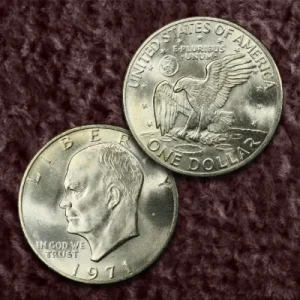
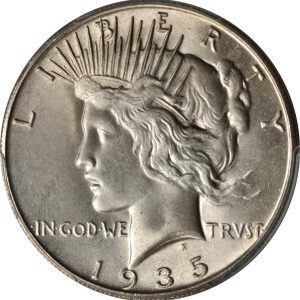
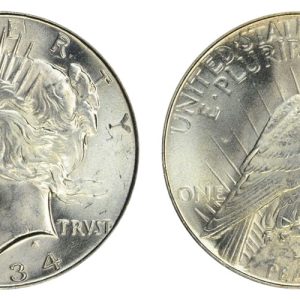
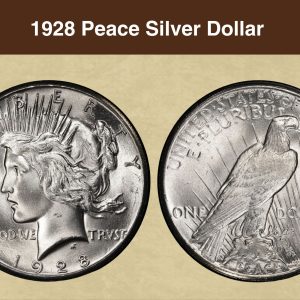
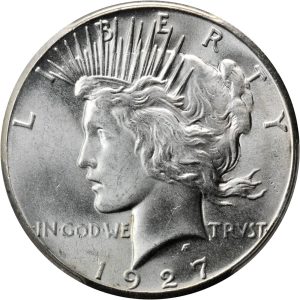
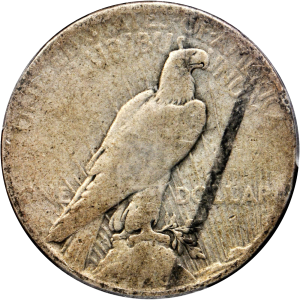
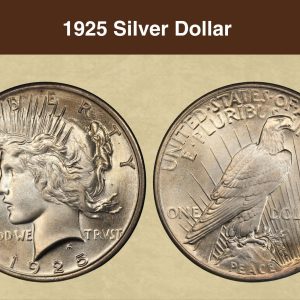
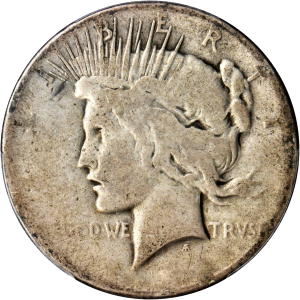
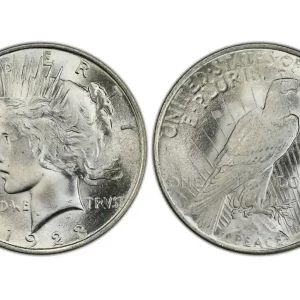
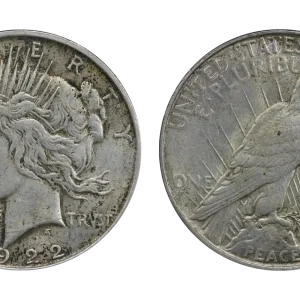
How much is a 1904 O Morgan dollar worth?
The value of a 1904-O Morgan dollar varies significantly, but for a circulated coin, it’s typically between $53 and $63. However, the final price depends heavily on the coin’s specific grade and condition, with high-grade, uncirculated examples, especially those with a “Gem” or “Proof-Like” designation, fetching much higher prices, potentially hundreds or even thousands of dollars.
Where is the mint mark on a 1904 silver dollar?
On a 1904 silver dollar (a Morgan Dollar ), the mint mark is located on the reverse side (the “tails” side) of the coin, positioned just below the wreath and above the letters in “DOLLAR”. If there is no mint mark, the coin was minted in Philadelphia; an “O” indicates New Orleans, and an “S” indicates San Francisco.
What is the O on a silver dollar?
The New Orleans Mint began striking the new silver dollars in 1879. The Denver Mint, established in 1906, struck the coins for only one year, in 1921. The mint marks appearing on the coins are none, representing Philadelphia, “CC” for Carson City, “S” for San Francisco, “O” for New Orleans and “D” for Denver.
How much is a dollar in 1904 worth today?
$1 in 1904 is equivalent in purchasing power to about $36.40 today, an increase of $35.40 over 121 years. The dollar had an average inflation rate of 3.02% per year between 1904 and today, producing a cumulative price increase of 3,540.18%.